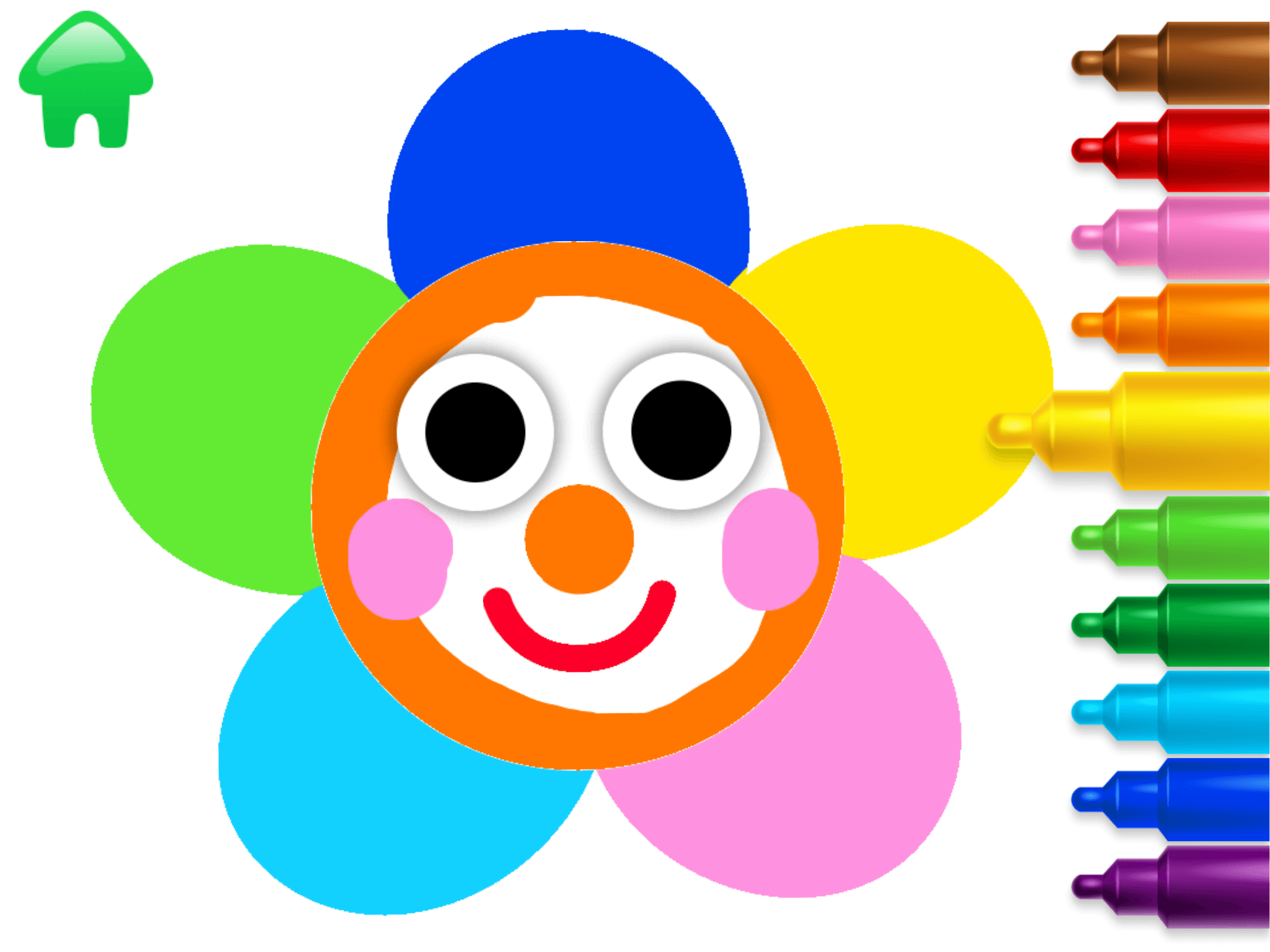Comparing lengths Normal Worksheets for Ages 4-7
4 filtered results
-
From - To
Introduce young learners to the concept of comparing lengths with our engaging and age-appropriate worksheets designed for children aged 4-7. These printable resources from Kids Academy help kids grasp basic measurement skills by comparing lengths using visual aids and fun activities. Tailored to fit early learning stages, the worksheets offer hands-on experiences in recognizing and distinguishing between different lengths, all while enhancing critical thinking and observational skills. Perfect for both classroom and home use, these materials support your child's math journey with ease and confidence, laying a strong foundation for future learning. Download and watch them enjoy learning!
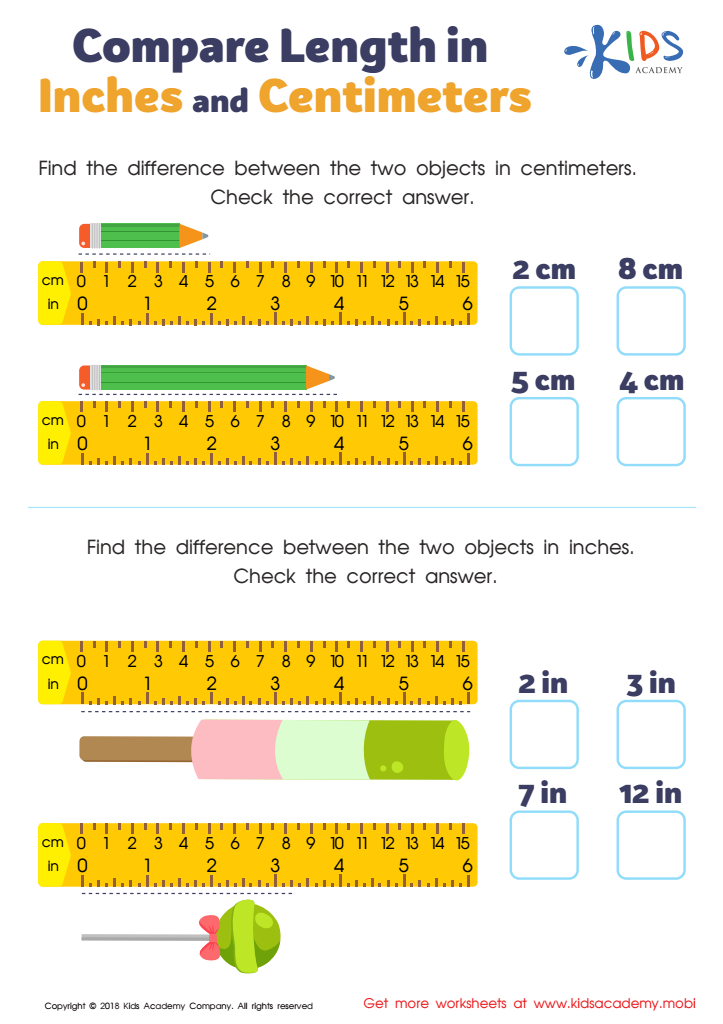

Compare Length in Inches and Centimeters Worksheet
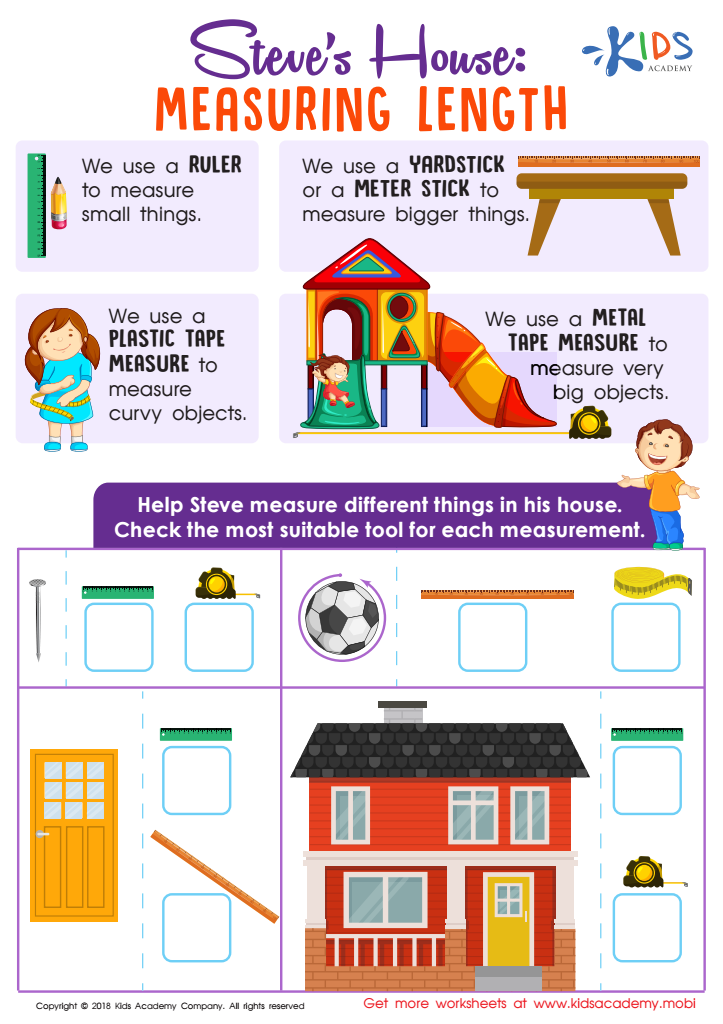

Steve's House: Measuring Length Worksheet
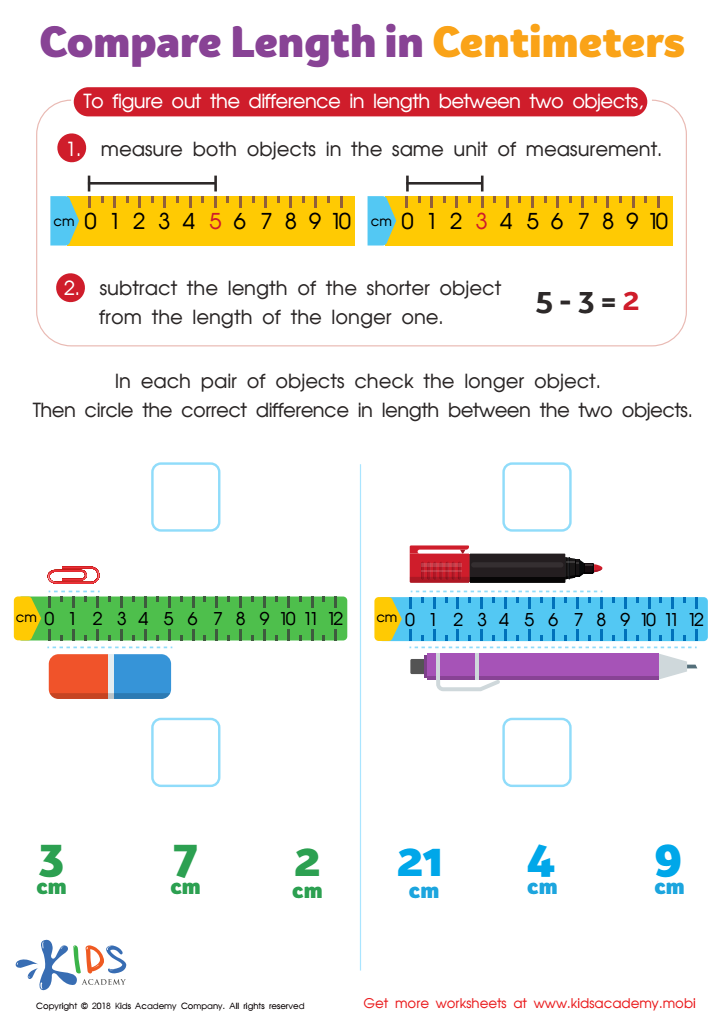

Compare Length in Centimeters Worksheet
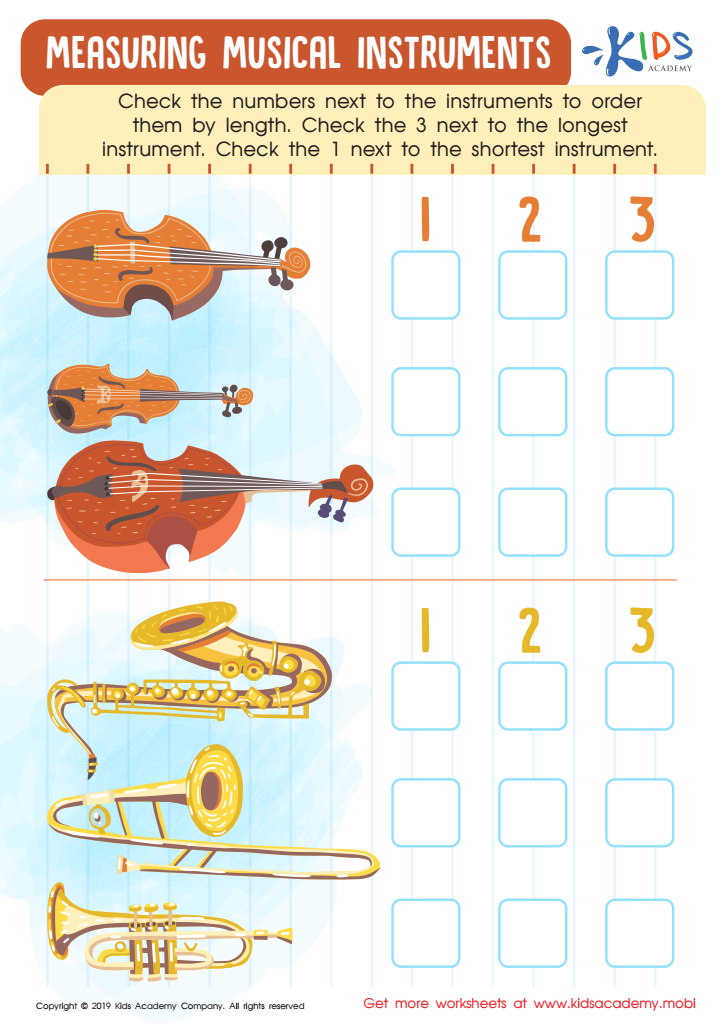

Measuring Musical Instruments Worksheet
Comparing lengths is a fundamental concept that nurtures early cognitive development in children aged 4-7. At this crucial stage, kids are rapidly absorbing information, and engaging in activities that involve measuring, comparing, and contrasting helps to build critical thinking skills. Parents and teachers should care about fostering these skills as they form the foundation for later mathematical learning and scientific reasoning.
Understanding lengths and learning to compare them empowers children with practical life skills. For example, when kids can distinguish which item is longer or shorter, they can make informed decisions in everyday contexts, like recognizing the best piece of tape to use for a task or choosing the right rope to tie something. These experiences strengthen their ability to evaluate and make choices, fostering independence and problem-solving abilities.
Moreover, discussing comparisons and measurements enhances vocabulary and language skills. For children in this age group, expressing themselves with terms like "longer," "shorter," "taller," and "the same length" bridges a critical gap between tangible experiences and abstract reasoning. It promotes mathematical language, making future concepts (like heavier/light, greater/lesser) easier to understand.
In conclusion, incorporating activities that involve comparing lengths into early education and home life equips children with essential analytical, verbal, and practical skills, setting them up for future academic success and real-world challenges.
 Assign to My Students
Assign to My Students



